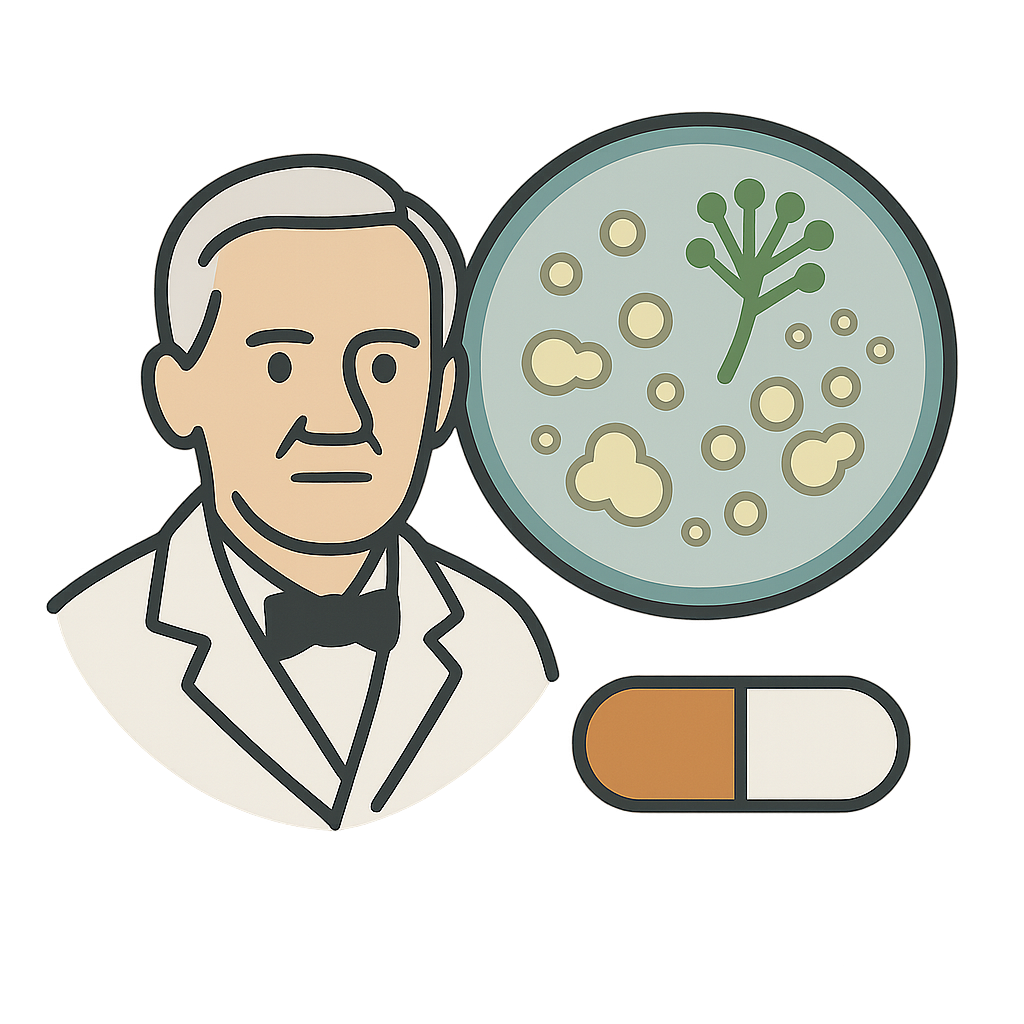Alexander Fleming and the Moldy Miracle
Hello there. My name is Alexander Fleming, and I am a scientist. Back in the 1920s, my workplace was a busy, bustling laboratory at St. Mary’s Hospital in London, England. I have to admit, while I loved my work and spent hours asking big questions about the world, I was a notoriously untidy scientist. My desk was often a mountain of papers, and my lab benches were cluttered with all sorts of glass bottles, tubes, and special glass dishes called petri dishes. These dishes are perfect for growing tiny living things called germs, or bacteria. For a long time, I had been studying a particularly pesky germ called staphylococcus. This little troublemaker could cause all sorts of nasty infections, and I was determined to find a way to stop it. In the summer of 1928, I was getting ready to leave for a nice, long holiday with my family. I was in such a hurry to escape the city that I didn't clean up properly. I left a tall stack of those petri dishes, still containing the staphylococcus germs, sitting on a bench by an open window. I simply forgot all about them and went off to enjoy my vacation, never imagining that my messy habits were about to lead to one of the most important discoveries in history.
When I returned to my lab on September 3rd, 1928, I was greeted by the familiar, cluttered sight of my workspace. I sighed and started the boring task of cleaning up the old petri dishes I had left behind. As I picked up one dish from the stack, I noticed something odd. A fuzzy, blue-green splotch of mold was growing on it, which wasn't terribly unusual. Molds are everywhere, and one must have floated in through the open window and landed in my dish. But this wasn't just any mold. All around it, there was a perfectly clear circle, like a little halo. Inside that circle, the staphylococcus germs I had been growing were completely gone. They had been wiped out. But outside the circle, the germs were growing just as thick as before. I stared at it for a long time, holding the dish up to the light. I said to myself, 'That's funny.' It was more than funny; it was fascinating. Most people might have just thrown the contaminated dish away, but my scientific curiosity took over. I realized the mold wasn't just taking up space; it was actively fighting the germs. It was producing some kind of invisible juice, a secret weapon that was powerful enough to destroy the dangerous bacteria. It was a moment of pure chance, a lucky break that happened because I hadn't tidied my bench. A shiver of excitement ran down my spine. I knew I had stumbled upon something incredibly important.
I carefully took a piece of that special mold and started growing more of it in my lab. I wanted to understand its germ-fighting secret. After studying it closely, I learned it belonged to a family of molds called Penicillium. So, I decided to name the germ-killing juice it produced 'penicillin.' I was so excited because I believed this could be a powerful medicine to treat infections and save lives. However, making this discovery was one thing, but turning it into a usable medicine was a much bigger challenge. I found it very difficult to get enough pure penicillin from the mold to treat even one person. For years, my discovery was mostly an interesting scientific curiosity. But then, about ten years later, two other brilliant scientists named Howard Florey and Ernst Chain picked up where I left off. They worked tirelessly and figured out a way to purify penicillin and produce it in large amounts. Together, we had turned my accidental discovery into the world's first antibiotic. Looking back, I see how that one messy petri dish changed medicine forever. It taught me that you should always keep your eyes open and stay curious. You truly never know when a little observation, even a happy accident, might lead to a discovery that can change the world for the better.
Reading Comprehension Questions
Click to see answer
